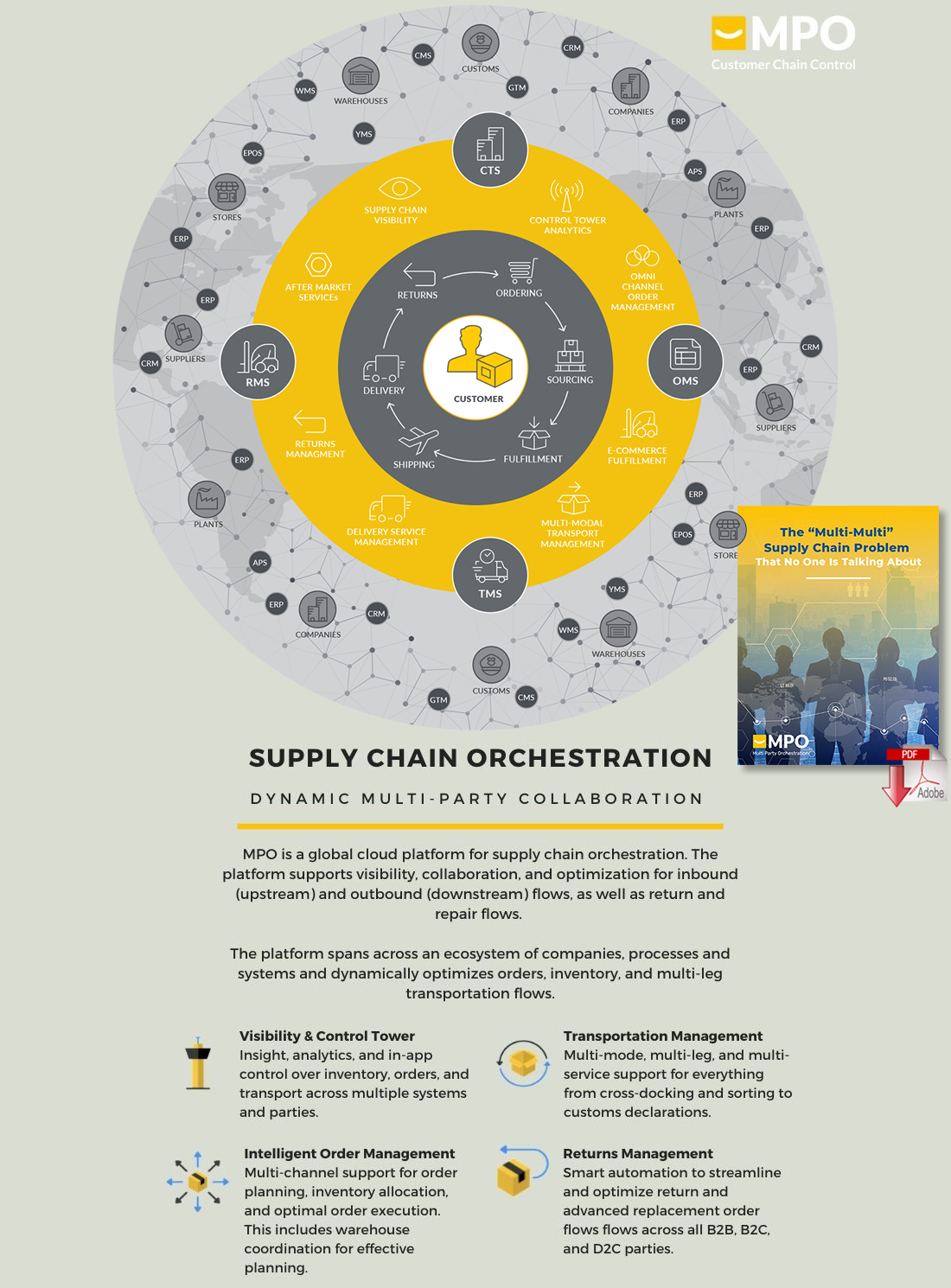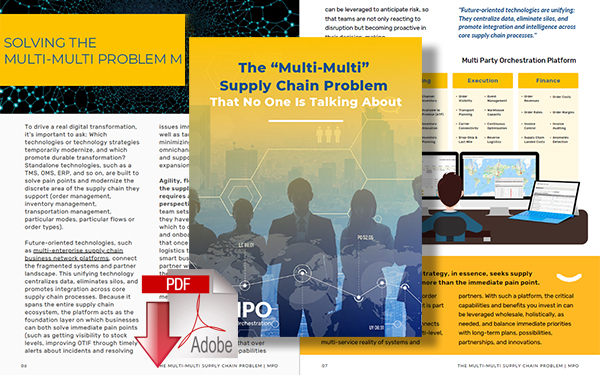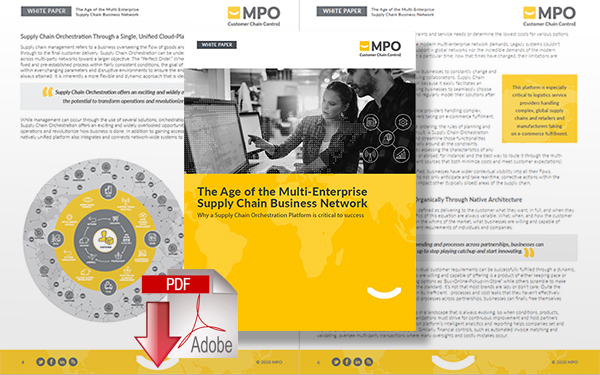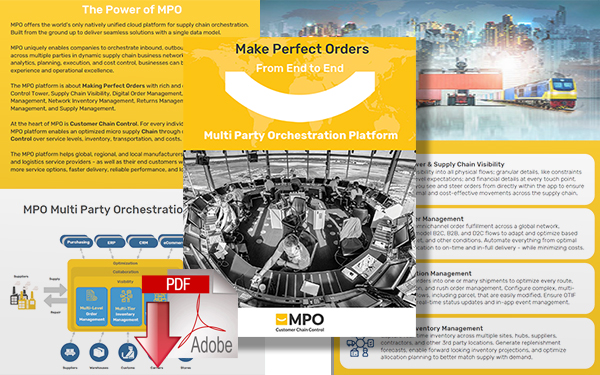What Is Supply Chain Management Doing in 2022?

As supply chains move past the initial impacts of the pandemic, it’s likely that some organizations will quickly fall back into their old habits.
Disrupted Global Supply Chains
It’s been more than two years since the start of Covid-19 and the pandemic upended daily life as we know it.
While many countries, particularly more developed economies, are on the road to recovery, global supply chains remain severely disrupted - partly due to the pandemic, but also due to tensions around trade.
It’s proven difficult to easily adapt to the disruptions in the supply chain: 84% of CFOs at organizations with annual revenue between $100 million to $3 billion see supply chain disruptions as either a moderate or severe risk.
In fact, the disruptions to the supply chain rank higher than all other threats, including talent shortages and even the resurgence of Covid-19.
From the rise in material and transportation costs to constant delays and shortages, it’s become increasingly difficult for companies to exceed, let alone meet the demands of consumers, while still remaining profitable.
Faced with more bottlenecks, supply chains have become less reliable as companies try to toe the line between responding to and matching supply and demand.
One thing is clear: supply chain management will continue to face disruptions in 2022, and as executives continue to prioritize digital transformation, here are the key ways that supply chain cloud platforms are helping organizations build resilience and balance costs while meeting consumer demands.
Supplier Diversification
Over the course of the pandemic, a lack of diversification caused many supply chains to be less resilient in the face of delays and cost increases.
Shipping costs have risen by as much as 600%. Most buyers with global supply chains primarily source their suppliers from China; having no alternatives, their supply chains face sudden, costly, and sometimes long-lasting, disruptions.
By putting all their eggs in one basket, businesses risk having a single point of failure that negatively impacts revenue. Diversifying the pool of available suppliers across various regions reduces production and sourcing costs and improves resilience.
While diversification cannot happen overnight, and can often be challenging for organizations heavily dependent on certain regions, businesses can rely on Multi-Enterprise Supply Chain Business Network (MESCBN) Technology to make the integration and onboarding process easier.
Supply chain software that unites multiple supplier networks into one platform also enables efficient supply management through continuous performance optimization over inbound management for faster and higher ROI.
Inventory Optimization
Despite supply chain disruption, most businesses still rely on the just-in-time (JIT) model, which attempts to minimize delays and costs by moving materials right before consumer demand requires it. By doing so, companies have traditionally been able to decrease costs both on storage and the transport process.
However, lean inventories require an intimate knowledge of the organization’s supply chain, and an improper balance could lead to unwanted surprises on the consumer side. Businesses often attempt to offset the downside of a JIT supply chain model with safety stock, but the pandemic has shown that ensuring sufficient safety stock has been less than optimal, let alone being able to adapt to demand increases.
As businesses optimize their inventory management (particularly within industries such as tech or automotive), it will require a custom-tailored approach to their current lean inventory strategy.
Supply chain cloud platforms can provide invaluable assistance for inventory optimization, particularly as organizations expand and work with multiple parties. With a centralized overview of all inventory, even if it’s in transit or in 3rd-party locations, decision-makers can make dynamic changes to their supply chain in real-time. With increased insights, businesses can better forecast stock, allocate inventory to specific demographics, and proactively match supply through dynamic order planning.
Lower Logistics Costs
As mentioned earlier, the costs of shipping and logistics are forecasted to continue rising in 2022. A combination of inflation, pandemic recovery, other global events, and increased shipping demand has led to sharp rises in contract rates across the freight sector. In fact, for parcel delivery services, the rate increase is the highest it’s been in almost a decade. No matter the form of shipment, transportation demand will likely continue to increase throughout the rest of the year, if not into 2023.
With most, if not all, of the leverage lying in the hands of the freight sector, companies are aiming to become more resilient by managing costs through tighter control of daily operations. For example, multi-party control tower platforms offer extensive cost control capabilities with granular, real-time visibility into each node of the supply chain, continuous optimization across order planning and execution, and dynamic invoice matching.
Read: 5 Critical Trends for Supply Chain Control Towers in 2022
With increased insight and control over finances – from customs to duties to handling – logistics managers can better understand their cost-to-serve and improve margins.
Supply Chain Sustainability
While many organizations’ immediate efforts are focused on mitigating supply chain disruptions, there is a rising trend towards incorporating sustainability in supply chains growth strategies, particularly as economies transition towards a post-pandemic outlook. In fact, 64% of CFOs believe that an Environmental, Social, and Governance (ESG) program can improve their company’s financial performance.
Given that many supply chains are still attempting to balance costs and services in the face of supply chain volatility, sustainability standards tend to happen on a high-level basis for now, instead of being incorporated on a daily operational level. This needn’t be the case, as supply chain cloud platforms offer incredible opportunities to execute greener order flows and even calculate to reduce environmental impact per order.
Sustainable practices can also be built into the returns experience: With embedded intelligence, supply chain cloud platforms leverage smart business rules to optimize around return time windows or alternative carriers across the repair and replacement flow management.
Read: How Will Tariffs Affect Supply Chain Sustainability Efforts for Global Manufacturers?
As supply chains move past the initial impacts of the pandemic, it’s likely that some organizations will quickly fall back into their old habits. But with trade tensions still present, it’s almost certain that vulnerabilities to the supply chain will remain and resurface. By taking a proactive approach towards adopting resilience with the aid of multi-party orchestration supply chain platforms, organizations can be better prepared to withstand continuous disruptions.
The MPO Multi-Party Orchestration Platform enables dynamic and optimized supply chain management to help organizations regain control of their supply chain. By uniting multiple parties, systems, and processes on one single platform, businesses achieve end-to-end visibility, collaboration, and optimization across inventory, orders, logistics, and transportation, so they can better serve customers while lowering costs. Learn more about how your team can leverage such a solution to better manage supply chain complexity by downloading the whitepaper below.
MPO was named “Visionary” in Gartner's 2021 Magic Quadrant for Multienterprise Supply Chain Business Networks. To learn more about the platform's revolutionary approach to supply chain orchestration, download a complimentary copy of our white paper The “Multi-Multi” Supply Chain Problem That No One Is Talking About. You can also get in touch by reaching out to [email protected] or requesting a demo today!
Related Resources
The “Multi-Multi” Supply Chain Problem That No One Is Talking About
In this white paper, we examine why the average organization is losing significant profits from supply chain disruptions and why we need to understand the deeper problem to change the outcome. Download Now!
The Age of the Multi-Enterprise Supply Chain Business Network
This white paper offers insight into leveraging your network to derive the greatest possible value under any circumstance, such as through a Supply Chain Orchestration platform that can automate and streamline a wide range of your business needs. Download Now!
Multi-Party Orchestration Platform
In this brochure, you'll find a guide to MPO's unified cloud platform for multi-party orchestration, including its rich and flexible solutions: Control Tower, Supply Chain Visibility, Digital Order Management, Transportation Management, Network Inventory Management, Returns Management, Spare Parts Management, and Supply Management. Download Now!
More Resources from MPO
Related Article: Modernizing Is Not Digitally Transforming - So what’s the Right Path for You and Your Company?
Article Topics
MPO News & Resources
TMS+ Go Beyond Transport to Optimize Cost, Service, & Resiliency Multi-Party Orchestration Platform When It Comes to Digital Transformation You May Not Be Doing What You Think How Chief Operating Officers are Achieving Results with Supply Chain Software SPARK Matrix Transportation Management System Software Analyst Report Top Trends Driving Change and Technology Strategy Within Logistics & Transportation Management 5 Key Steps for Optimizing your Last Mile Delivery More MPOLatest in Supply Chain
FedEx Announces Plans to Shut Down Four Facilities How Supply Chains Are Solving Severe Workplace Shortages SAP Unveils New AI-Driven Supply Chain Innovations How Much Extra Will Consumers Pay for Sustainable Packaging? U.S. Manufacturing is Growing but Employment Not Keeping Pace The Two Most Important Factors in Last-Mile Delivery Most Companies Unprepared For Supply Chain Emergency More Supply Chain


















